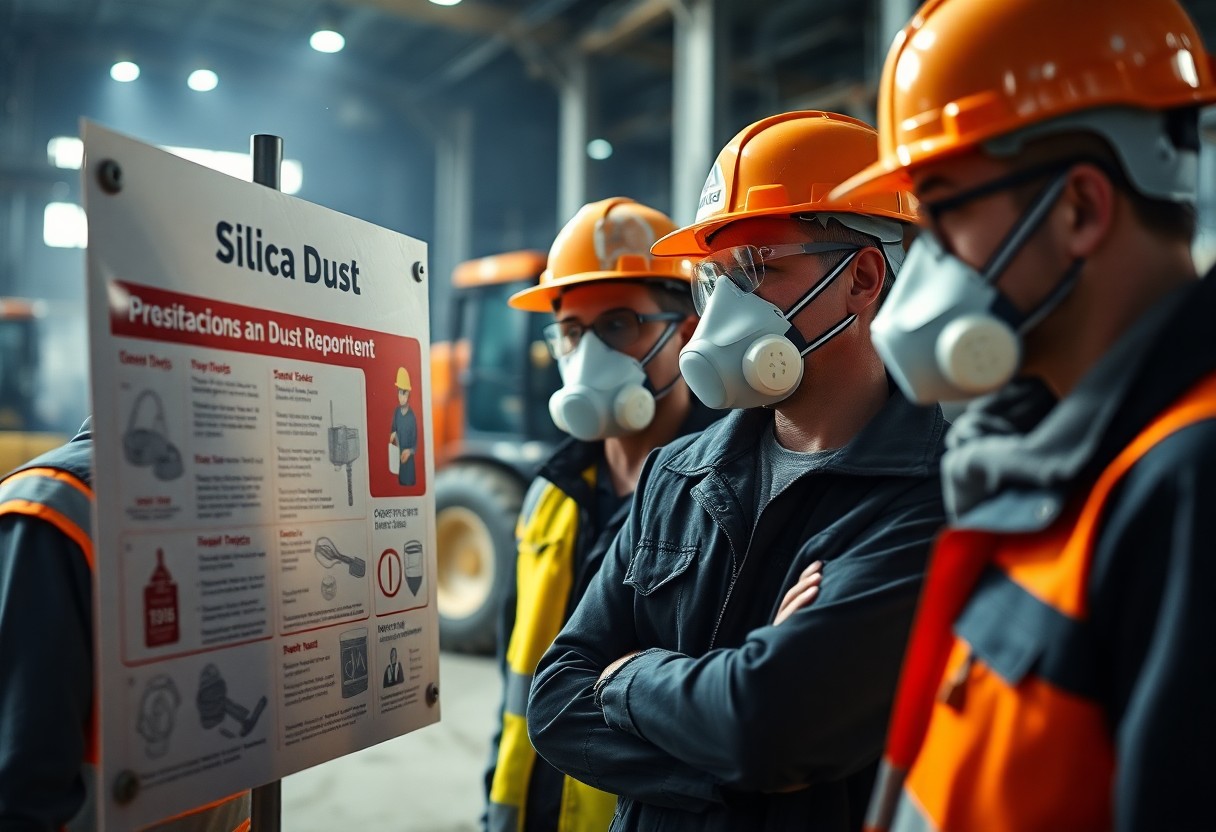There’s a significant risk lurking on many job sites, and it comes in the form of silica dust. As a worker, it’s imperative that you are informed about this danger and equipped with the knowledge to protect your lungs while on the job. Silica is found in materials such as sand, stone, concrete, and mortar, and when these materials are disturbed, they can release fine particles into the air that can be inhaled.
When you breathe in silica dust, it can lead to serious health problems, including silicosis, chronic obstructive pulmonary disease (COPD), and even lung cancer. These conditions can develop over time, often without immediate symptoms, which makes it all the more important for you to take preventive measures. Understanding the risks and implementing protective strategies can significantly reduce your chances of exposure.
To begin with, you should familiarize yourself with the work environment. Identify areas where silica dust might be present, such as during activities like cutting, grinding, or drilling materials that contain silica. Also, be aware that tasks like demolition and tuckpointing can also release silica dust. By knowing when you’re at risk, you can take proactive steps to minimize exposure.
One of the most effective ways to protect your lungs is to use personal protective equipment (PPE). Always wear the appropriate respirator that is fitted and approved for silica exposure. This gear is designed to filter out harmful particles and ensure you breathe clean air while working. Additionally, using goggles can help protect your eyes from dust and flying debris.
It’s also crucial that you utilize dust control measures whenever possible. Wet cutting methods or using specialized tools that limit dust creation can substantially reduce the amount of silica particles released into the air. Whenever feasible, employ a vacuum system equipped with a HEPA filter to capture dust at the source. Utilizing engineering controls, such as improving ventilation in the workspace, can further mitigate the risk of inhaling silica dust.
Always stay hydrated and take breaks in areas with clean air to minimize your exposure. Regularly cleaning your work area to reduce dust accumulation is another effective strategy. Encourage your colleagues to follow suit; maintaining a clean work environment benefits everyone and minimizes overall health risks.
Furthermore, participating in training programs can enhance your understanding of silica hazards and the best protective practices. Being aware of your workplace’s specific safety protocols will ensure you are well-prepared and informed.
Your health is your most significant asset, so taking the time to educate yourself about silica dust and implementing protective measures is vital. By being proactive and diligent about safety, you can protect your lungs and ensure that you are able to work safely and efficiently on the job. Stay safe, and keep yourself informed!

Leave a Reply